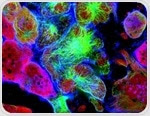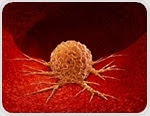| ||||||||||||||||||||||||
| ||||||||||||||||||||||||
| ||||||||||||||||||||||||
| ||||||||||||||||||||||||
| ||||||||||||||||||||||||
viernes, 17 de agosto de 2018
New probe allows identification of cancer stem cells in situ
New probe allows identification of cancer stem cells in situ
Suscribirse a:
Enviar comentarios (Atom)





























.png)











No hay comentarios:
Publicar un comentario